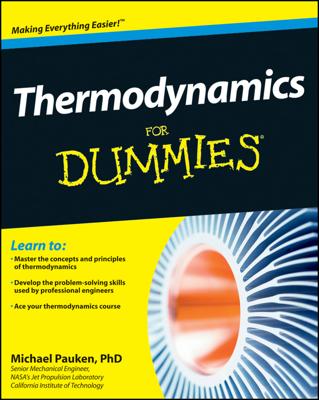You always start a calculation or observation in physics by making measurements; and when the physics topics you're discussing are heat and temperature, you have several different scales at your disposal — most notably, Fahrenheit, Celsius, and Kelvin.
When the thermometer says Fahrenheit
In the United States, the most common temperature scale is the Fahrenheit scale. Like in other temperature scales, measurements in the Fahrenheit scale are made in degrees. For example, the blood temperature of a healthy human being is 98.6 ° F — the F means you're using the Fahrenheit scale.
When the thermometer says Celsius
The Fahrenheit system wasn't very reproducible in its early days, so another system was developed — the Celsius scale (formerly called the Centigrade system). Using this system, pure water freezes at 0°C, and it boils at 100°C. These measurements are easier to reproduce than Fahrenheit's 32° and 212° because pure water is easy to come up with. Here's how you tie the two systems of temperature measurement together (these measurements are at sea level; they change as you go up in altitude):
Freezing water = 32°F = 0°C
Boiling water = 212°F = 100°C
If you do the math, you find 180°F between the points of freezing and boiling in the Fahrenheit system and 100°C in the Celsius system, so the conversion ratio is 180 / 100 = 18 / 10 = 9 / 5. And don't forget that the measurements are also offset by 32 degrees (the 0-degrees point of the Celsius scale corresponds to the 32-degrees point of the Fahrenheit scale). Putting these ideas together lets you convert from Celsius to Fahrenheit or from Fahrenheit to Celsius pretty easily; just remember these equations:
C = (5 / 9)(F – 32)
F = (9 / 5) C + 32
For example, the blood temperature of a healthy human being is 98.6°F. What does this equal in Celsius? Just plug in the numbers:
C = (5 / 9)(F – 32) = (5 / 9)(98.6 – 32) = 37.0°C
When the thermometer says Kelvin
William Thompson created a third temperature system, one now in common use in physics, in the 19th century — the Kelvin system (he later became Lord Kelvin). The Kelvin system has become so central to physics that the Fahrenheit and Celsius systems are defined in terms of the Kelvin system — a system based on the concept of absolute zero.
Analyzing absolute zero
Temperature is really a measure of molecular movement — how fast and how much the molecules of whatever object you're measuring are moving. The molecules move more and more slowly as the temperature lowers. At absolute zero, the molecules stop, which means that you can't cool them any more. No refrigeration system in the world — or in the entire universe — can go any lower.
The Kelvin system is based on absolute zero as its zero point, which makes sense when you think about it. What's a little odd is that you don't measure temperature in this scale in degrees; you measure it in kelvins (seems like Lord Kelvin wanted to make sure you never forget his name). A temperature of 100° in the Celsius system is 100°C, but a temperature of 100 is 100 kelvins in the Kelvin scale. This system has become so widely adopted that the official meters-kilograms-seconds (MKS) unit of temperature is the kelvin (in practice, you see °C used more often in introductory physics).
Making Kelvin conversions
Each kelvin is the same size as a Celsius degree, which makes converting between Celsius degrees and kelvins easy. On the Celsius scale, absolute zero is –273.15°C. This temperature corresponds to 0 kelvins, which you also write as 0K (not, please note, 0°K).
So, to convert between the Celsius and Kelvin scales, all you have to use is the following formula:
K = C + 273.15
C = K – 273.15
And to convert from kelvins to Fahrenheit, you can use this formula:
F = (9 / 5)(K – 273.15) + 32 = (9 / 5)K – 459.67
What temperature does water boil at in kelvins? Well, pure water boils at 100°C, so
K = C + 273.15 = 100 + 273.15 = 373.15K
Water boils at 373.15K.
Helium turns to liquid at 4.2K; what's that in °C? Use the formula:
C = K – 273.15 = 4.2 – 273.15 = –268.95°C
Helium liquefies at –268.95°C. Pretty chilly.

